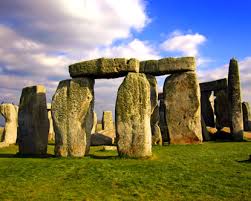 e of the most famous sites in the world, Stonehenge is composed of earth works surrounding a circular setting of large standing stone and sits at the center of the densest complex of Neolithic and Bronze age monuments en England, including several hundreds burial mounds. Archelogists believed that the iconic stone monument was erected around 2500 BC. However one recent theory has suggested that the first stones were not erected until 2400-2200 BC. The surro
e of the most famous sites in the world, Stonehenge is composed of earth works surrounding a circular setting of large standing stone and sits at the center of the densest complex of Neolithic and Bronze age monuments en England, including several hundreds burial mounds. Archelogists believed that the iconic stone monument was erected around 2500 BC. However one recent theory has suggested that the first stones were not erected until 2400-2200 BC. The surro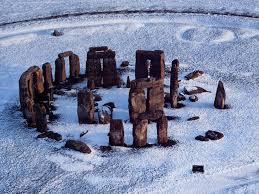 unding circular earth bank and ditch, which constitute the earliest phase of the monument, have been dated to abut 3100 BC. The site and its surrounding were added to the UNESCO's list of World Heritage Sites in 1986 in a co-listing with Avebury Henge Monument, and it is also a legally protected scheduled ancient monument. The surrounding land is owned by New archaeological evidence found by the stone henge river side project indicates that Stonehenge served as a burial ground from its earliest beginnings. The dating of cremated remains found on th
unding circular earth bank and ditch, which constitute the earliest phase of the monument, have been dated to abut 3100 BC. The site and its surrounding were added to the UNESCO's list of World Heritage Sites in 1986 in a co-listing with Avebury Henge Monument, and it is also a legally protected scheduled ancient monument. The surrounding land is owned by New archaeological evidence found by the stone henge river side project indicates that Stonehenge served as a burial ground from its earliest beginnings. The dating of cremated remains found on th e site shows that burials took place there as early as 3000 BC, when the first ditches were being constructed around the monument. Burials continued at Stonehenge for at least another 500 years.
e site shows that burials took place there as early as 3000 BC, when the first ditches were being constructed around the monument. Burials continued at Stonehenge for at least another 500 years.Stonehenge was a place of burial from its beginning to its zenith in the mid third millennium B.C. The cremation burial dating to Stonehenge's sarsen stones phase is likely just one of many from this late period of the monument's use and demonstrates that it was still very much a domain of the dead.
Stone hinge arouse from a rich tradition of equally enignmatic mysteriousstructures. A henge is a cirlcle of stone or wooden uprights. Generally these hinges contain circular banks of the earth paralleled by an internal ditch. Strictly speaking, stone hange is not, its name implies ha henge because th
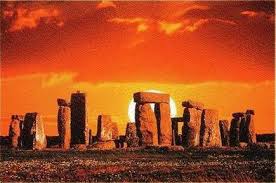 e position of its bank and ditch are reveresed. An earth wall about 320 feet in diameter surrounds the monument. Thirty blocks of grey sand stone stood in a circle above the ground about 97 feet in diameter. A contuinuous circle of smaller blocks stood on top of them. Inside the circle was another circle that consisted of about 60 blue stones each weighing about 4 tons. The circle contained about two horse she shaped sets of stones one inside the other opening toward the north east. These blocks called trilithons stand up to 22 feet tall and weigh 30-40 tons. A stone 60 feet high stood 86 yards to the east of stone henge's centre. This stone many have been used in a religious ceremoney to the rising sun or mind summer day.
e position of its bank and ditch are reveresed. An earth wall about 320 feet in diameter surrounds the monument. Thirty blocks of grey sand stone stood in a circle above the ground about 97 feet in diameter. A contuinuous circle of smaller blocks stood on top of them. Inside the circle was another circle that consisted of about 60 blue stones each weighing about 4 tons. The circle contained about two horse she shaped sets of stones one inside the other opening toward the north east. These blocks called trilithons stand up to 22 feet tall and weigh 30-40 tons. A stone 60 feet high stood 86 yards to the east of stone henge's centre. This stone many have been used in a religious ceremoney to the rising sun or mind summer day.In 1950, British archeologists began excavations and proved that monumnent was bui
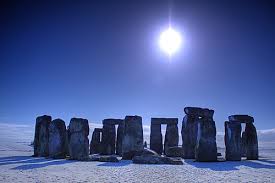 lt in 3 main phased from 2800 - 1500 B.C. and famous large ring of stones was built between 1800-1700 B.C. The first certain structural stones of Stonehenge, at the blue stones which were floated, dragged and hauled from Wales, almost likely arrived sometime before 2500 B.C. The giant sarsons followed filling out the monumnent, which was at some point linked by an avenue to river Avon. Stone henge then is the culminatin of dynamic evolution. In and around the hiant henge were two circular timber structures whose footprints survive in traces of their postholes. Two- the northern and southern cirlcles- lay with in the henge itself, while a later
lt in 3 main phased from 2800 - 1500 B.C. and famous large ring of stones was built between 1800-1700 B.C. The first certain structural stones of Stonehenge, at the blue stones which were floated, dragged and hauled from Wales, almost likely arrived sometime before 2500 B.C. The giant sarsons followed filling out the monumnent, which was at some point linked by an avenue to river Avon. Stone henge then is the culminatin of dynamic evolution. In and around the hiant henge were two circular timber structures whose footprints survive in traces of their postholes. Two- the northern and southern cirlcles- lay with in the henge itself, while a later 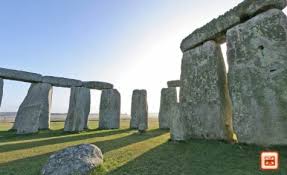 monumnent known as wood henge stood jut outside. There is evidence to suggest that timber circles were
monumnent known as wood henge stood jut outside. There is evidence to suggest that timber circles weresecretive places, their interiors hidden by screens as well as by multiplication of posts.
In 2002 archeologists working on the east side of Avon, two and half miles south east of stone henge, unearthed two burials dated at between 2500 and 2300 B.C. They contained the remains of the men.

No comments:
Post a Comment